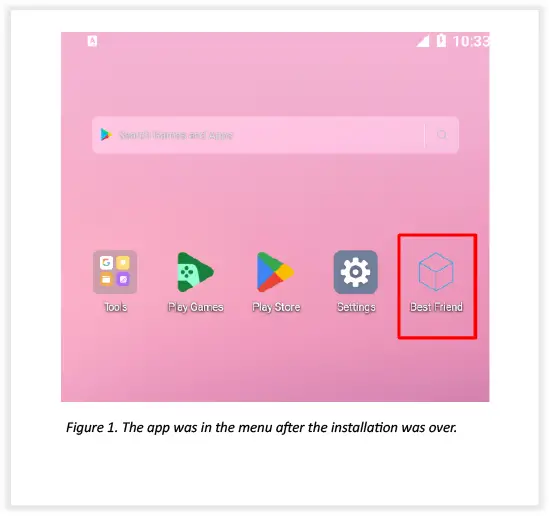
Cybersecurity researchers at CYFIRMA have uncovered a sophisticated cyberattack targeting high-value individuals in Southern Asia. Leveraging the SpyNote Remote Administration Tool (RAT), an unknown threat actor designed a malicious Android payload to infiltrate targeted systems.
The investigation revealed that the attacker delivered the malware through WhatsApp, a move that researchers described as “a terrible move from the threat actor’s viewpoint.” The victim received four payloads with seemingly innocuous names, such as “Best Friend” and “Friend.” All apps were linked to a single command-and-control (C2) server and were designed to operate covertly. As noted in the report, “The app was installed and was concealed within seconds while operating in the background.”

The Android malware demonstrated several advanced features designed to compromise the victim’s device. Key capabilities included:
- Access to Sensitive Permissions: The malware exploited permissions such as:
- ACCESS_FINE_LOCATION to track the victim’s live location.
- READ_CONTACTS to exfiltrate contact lists.
- CAMERA to interact with the device’s camera.
- READ_SMS to intercept and read text messages.
- WRITE_EXTERNAL_STORAGE to access and manipulate stored files.
- Exploitation of Accessibility Services: The malware directed victims to enable accessibility settings, granting the attacker the ability to monitor screen activity, capture keystrokes, and prevent uninstallation. CYFIRMA stated, “Enabling accessibility for the maliciously installed app allows the attacker to perform dangerous maneuvers, such as screen capture and keystroke capturing.”
- Device Reconnaissance: The malware fetched detailed device information, including IMEI, SIM, Android version, and network type, offering attackers a complete profile of the compromised system.
SpyNote RAT, the foundation of this malware, has undergone significant evolution over the years. Initially developed as a remote administration tool, SpyNote has since been repurposed for espionage and financial fraud. Variants such as SpyMax, Crax RAT, and Eagle Spy have introduced enhanced capabilities, making SpyNote a tool of choice for threat actors.
CYFIRMA’s report highlights that “APT groups, including OilRig (APT34), APT-C-37 (Pat-Bear), and OilAlpha, have utilized SpyNote in their malicious campaigns” to target critical sectors like government agencies, financial institutions, and NGOs.
While the specifics of the targeted asset remain confidential, CYFIRMA suspects involvement from either an unidentified APT group or an independent actor. This campaign underscores the persistent threat posed by malware like SpyNote, particularly in geopolitically sensitive regions.
Related Posts:
- SpyNote Malware: Fake Antivirus Targets Android Users in Sophisticated New Campaign
- SpyNote RAT Evolves: Targets Your Cryptocurrency Wallet
- SpyNote: The Stealthy Android Spyware Spreading via SMS
- Professional Goods & Services at Risk: Decoding CYFIRMA’s Cybersecurity Report
- Wish Stealer: New Malware Targets Discord, Browsers, and Cryptocurrency Wallets